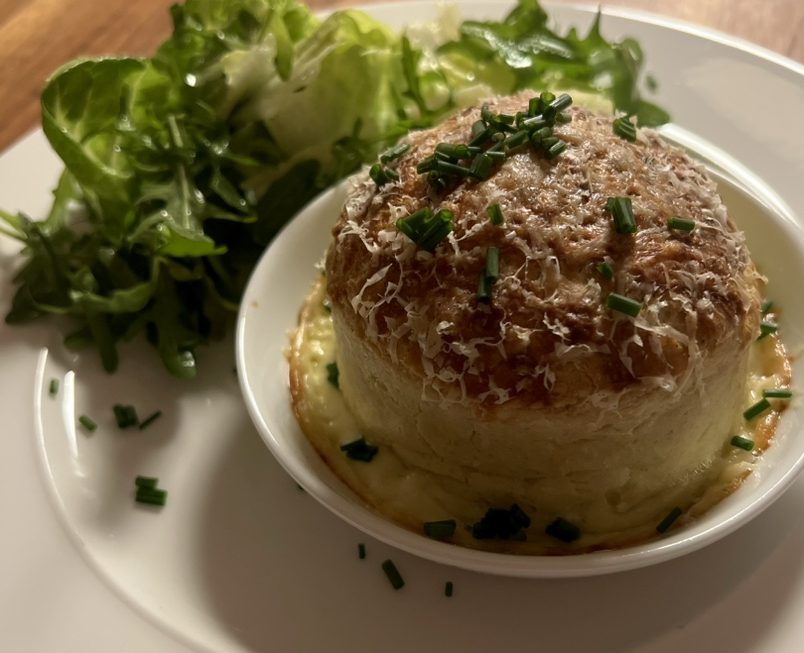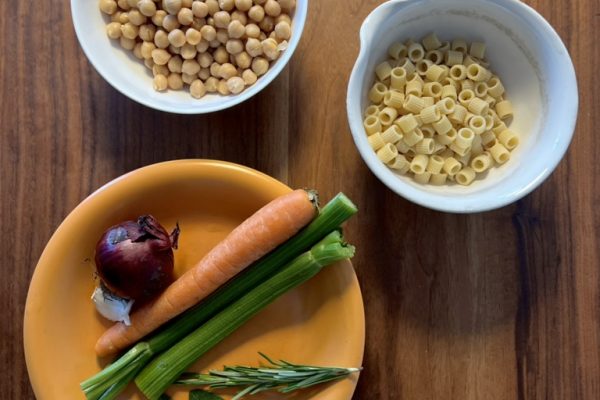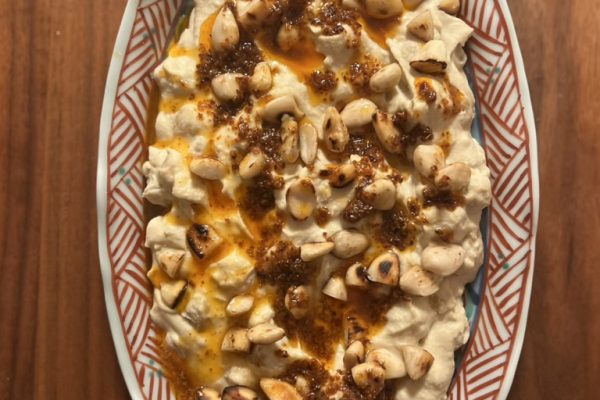Baking a soufflé can be a tricky affair, especially when it’s a dessert. Today’s soufflé is much easier to prepare.
You can enjoy it after the first baking or, like us today, bake it a second time. It then doesn’t have to be served as soon as it comes out of the oven, but can also be baked for the first time the day before. This makes it very suitable as a delicious starter in a menu for which you want to be well prepared and only need to finalise dishes.
We start with the ingredients for a béchamel, a basic sauce in classic French cuisine. All you need is butter, flour and milk, precisely weighed out please.
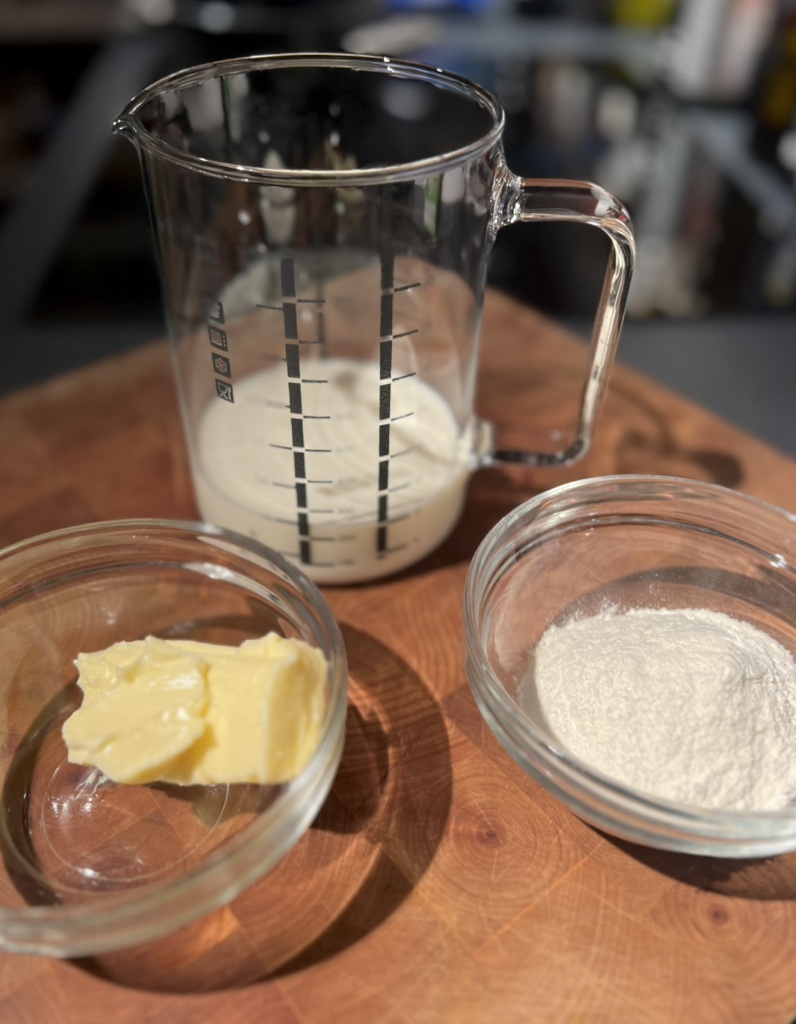
The butter is melted over a medium-high heat, then the flour is stirred in completely with a whisk and this so-called roux is cooked for about three minutes.
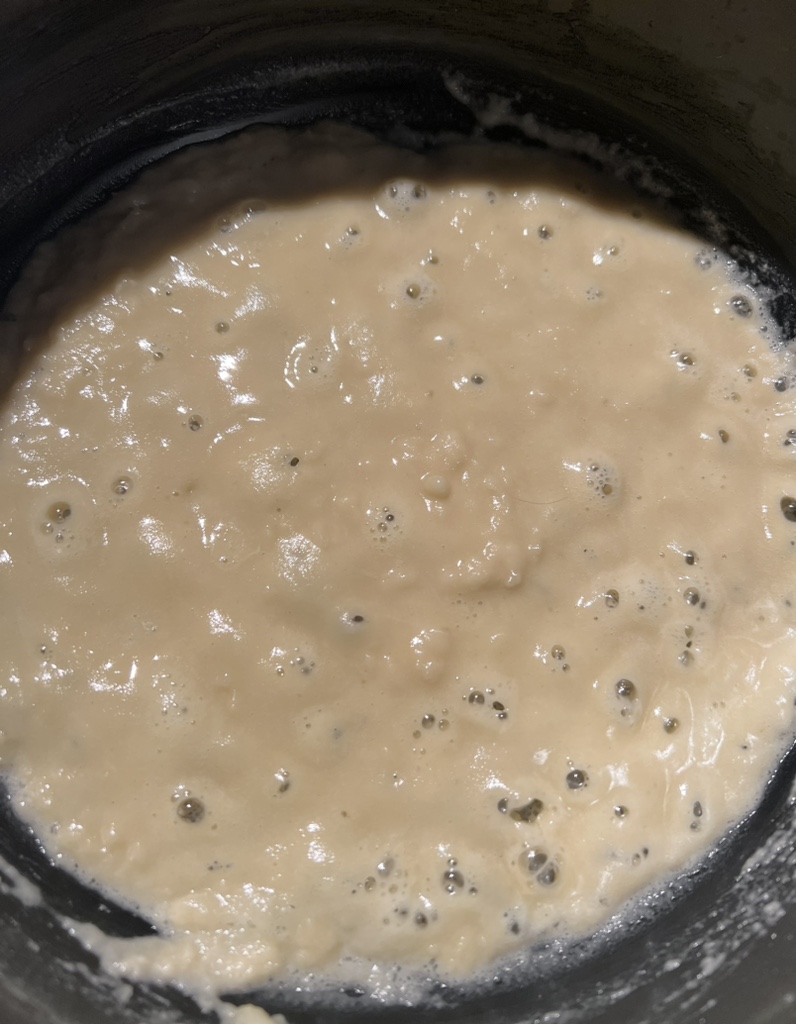
The cold milk is then slowly combined with the Roux, stirring constantly, and cooked for a few more minutes until the mixture is quite firm. The rule of thumb is: hot Roux with cold milk or cold Roux with hot milk – then no lumps will form.
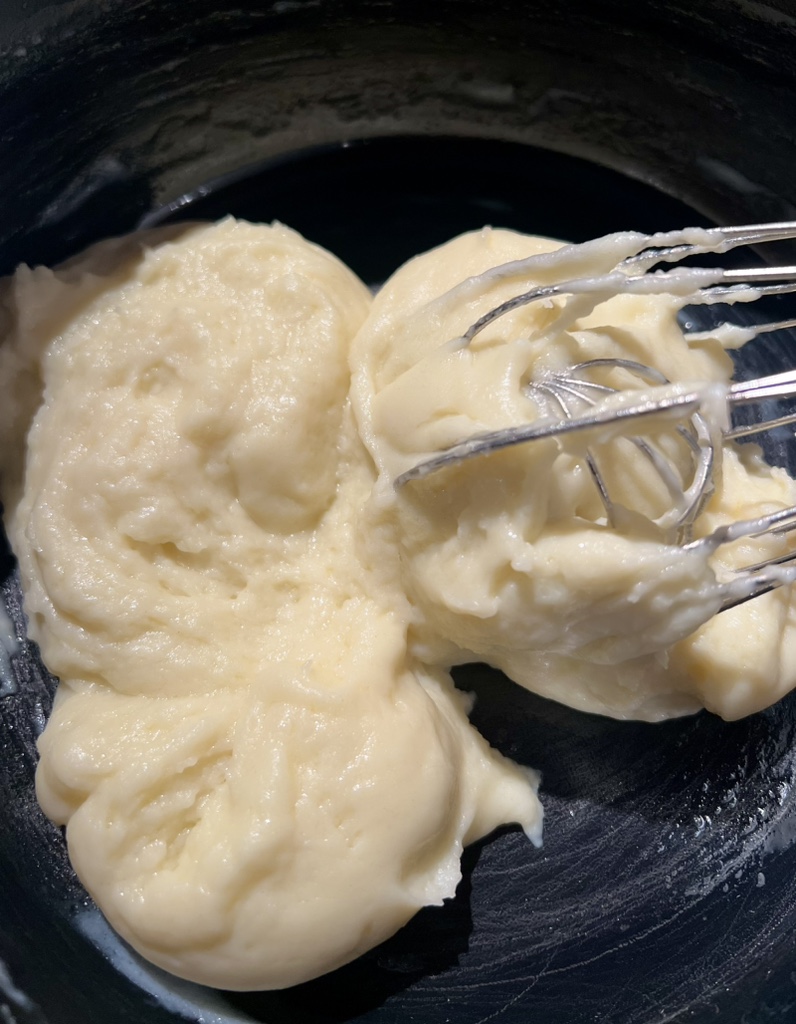
The béchamel is removed from the heat to cool. Eggs are separated into yolks and whites. It doesn’t matter if there are still some egg whites in the yolks, just don’t do it the other way round, otherwise you won’t get good beaten egg whites later.
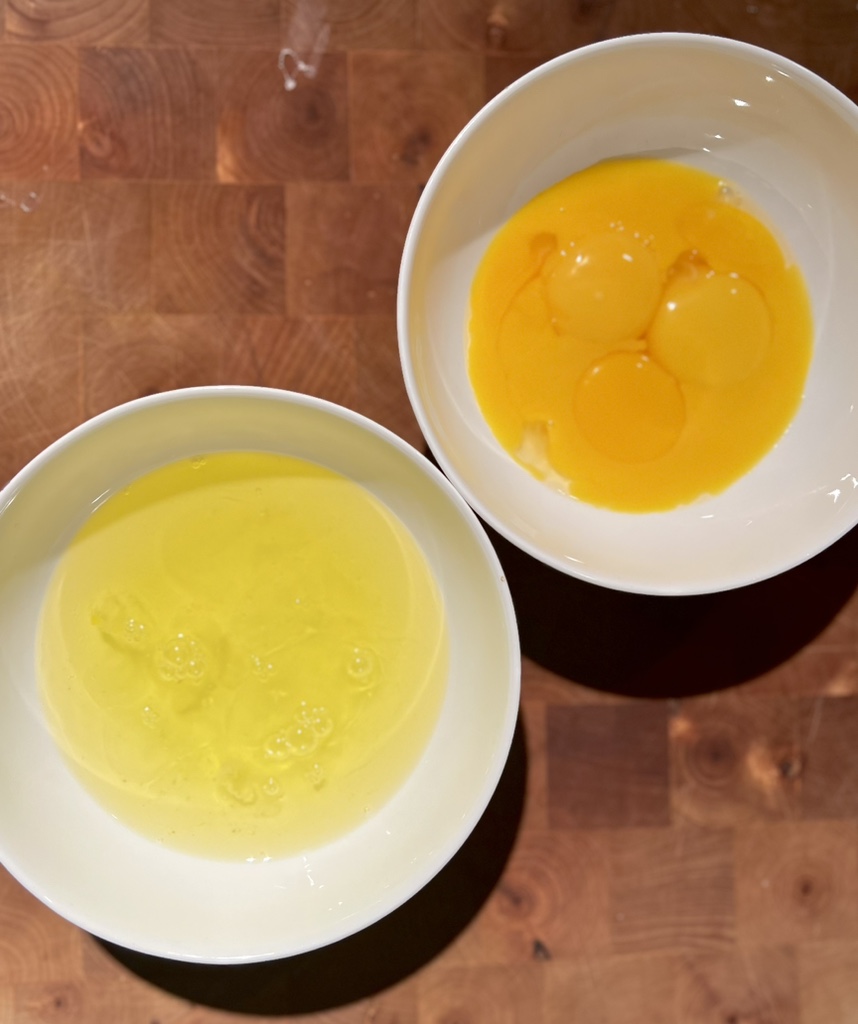
After about five minutes, finely chopped blue cheese is added to the béchamel with the egg yolk and gently seasoned with salt, black pepper and freshly ground nutmeg to taste. Blue cheese can be very delicate or extremely intense. The quantity we have indicated refers to a rather mild variety, so you should also taste the quantity that suits you best.
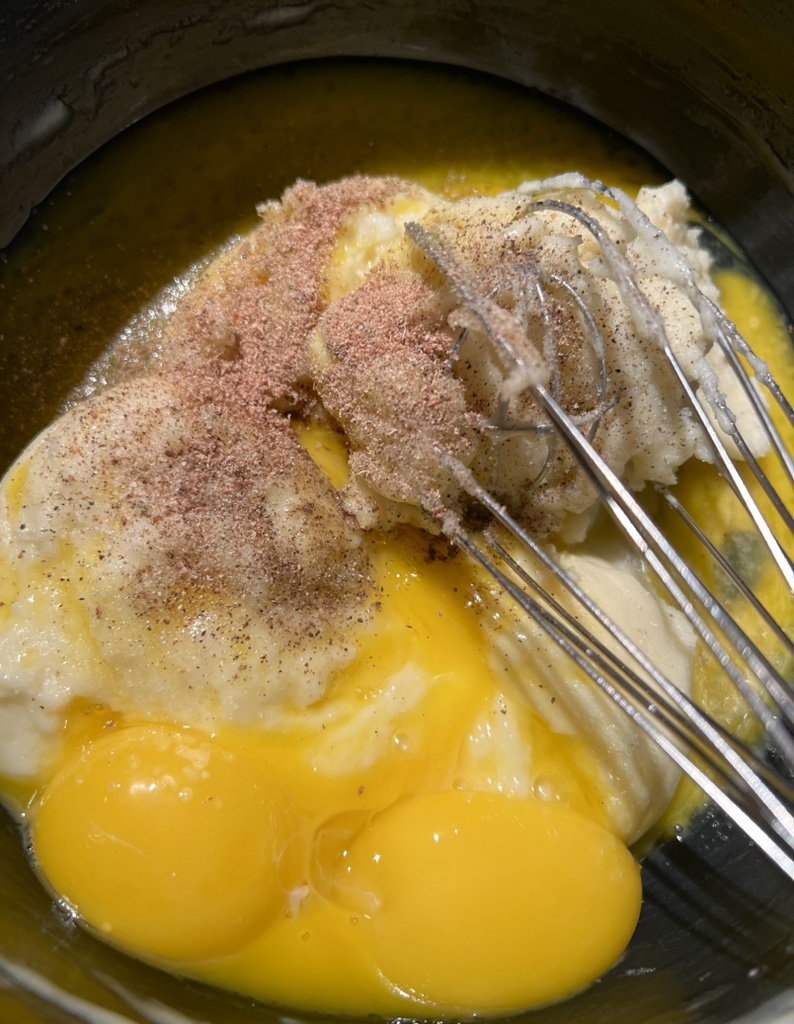
We mix everything thoroughly with a silicone scraper and leave the mixture to cool further.
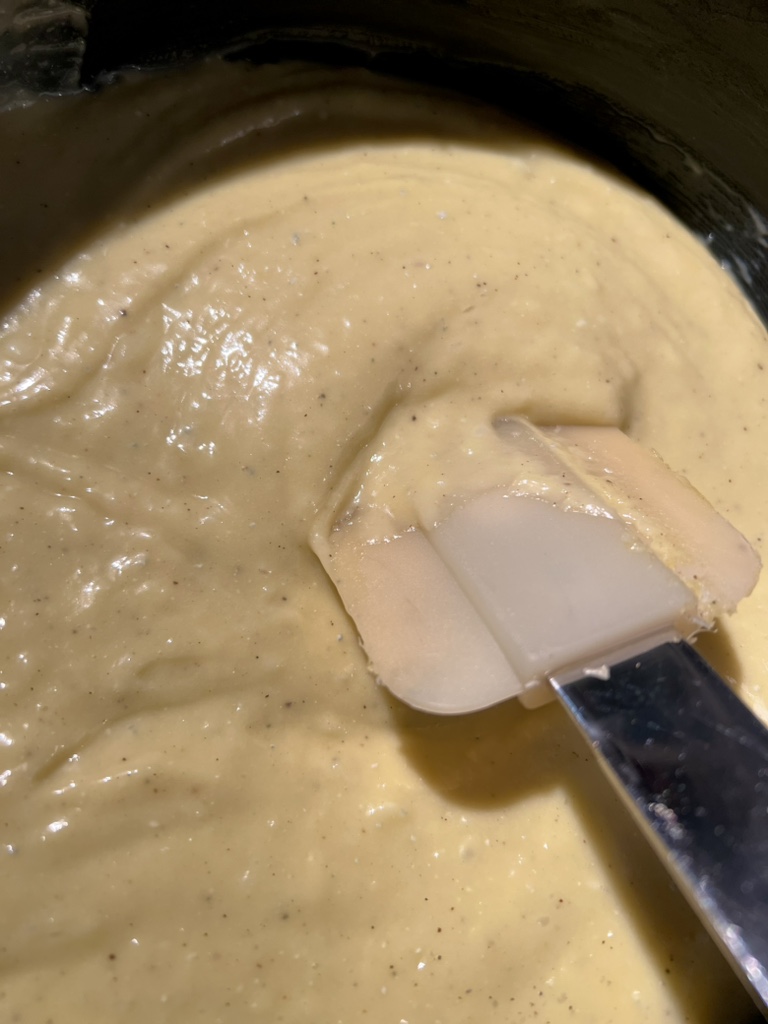
The egg whites are then beaten until firm. These should be stable and no longer contain any liquid, but care must be taken not to overbeat them. As with whipped cream, the texture changes very adversely if you beat the egg whites for too long. With a little patience, you can do this by hand with a whisk, but a food processor is of course the easiest way. The beaten egg whites are perfect as soon as stable peaks can be formed.
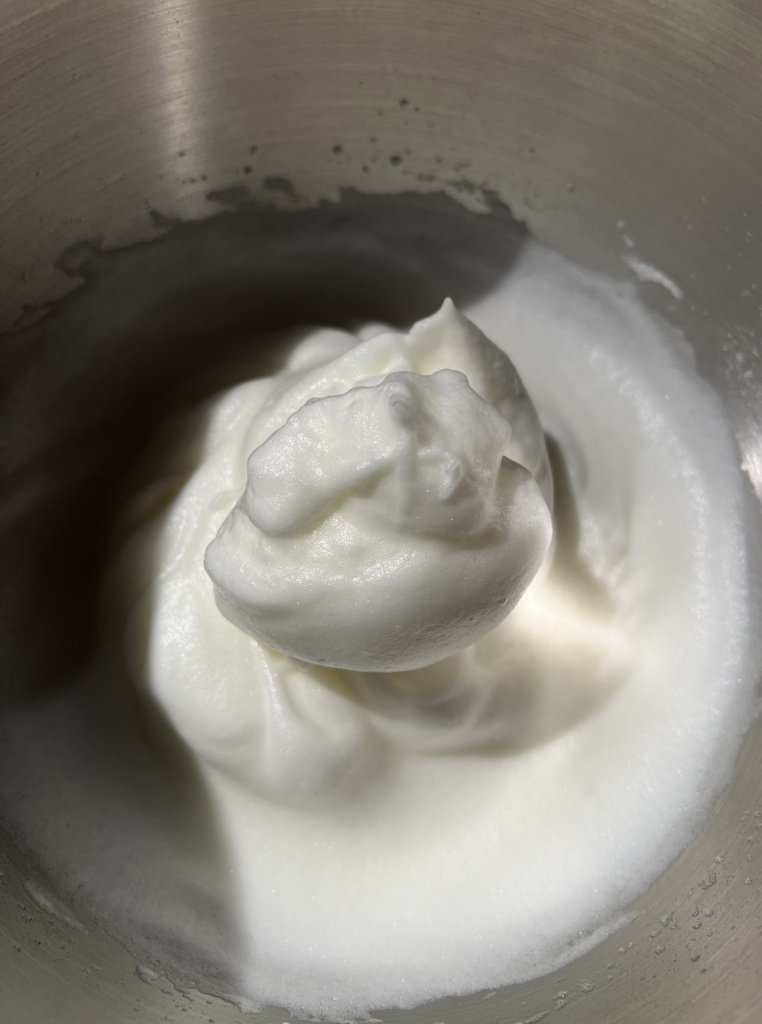
We first stir just under a third of the beaten egg white into the cooled mixture thoroughly, without having to work carefully. This step improves the ideal absorption of the remaining beaten egg white later on.
Once this is done, we slowly and carefully fold the main part of the egg whites into our mixture using the silicone scraper, without compacting it. We want to create a uniform cream without destroying the airiness of the beaten egg whites. The cream must be homogeneous, otherwise areas of the soufflé will taste unpleasantly of egg later on.
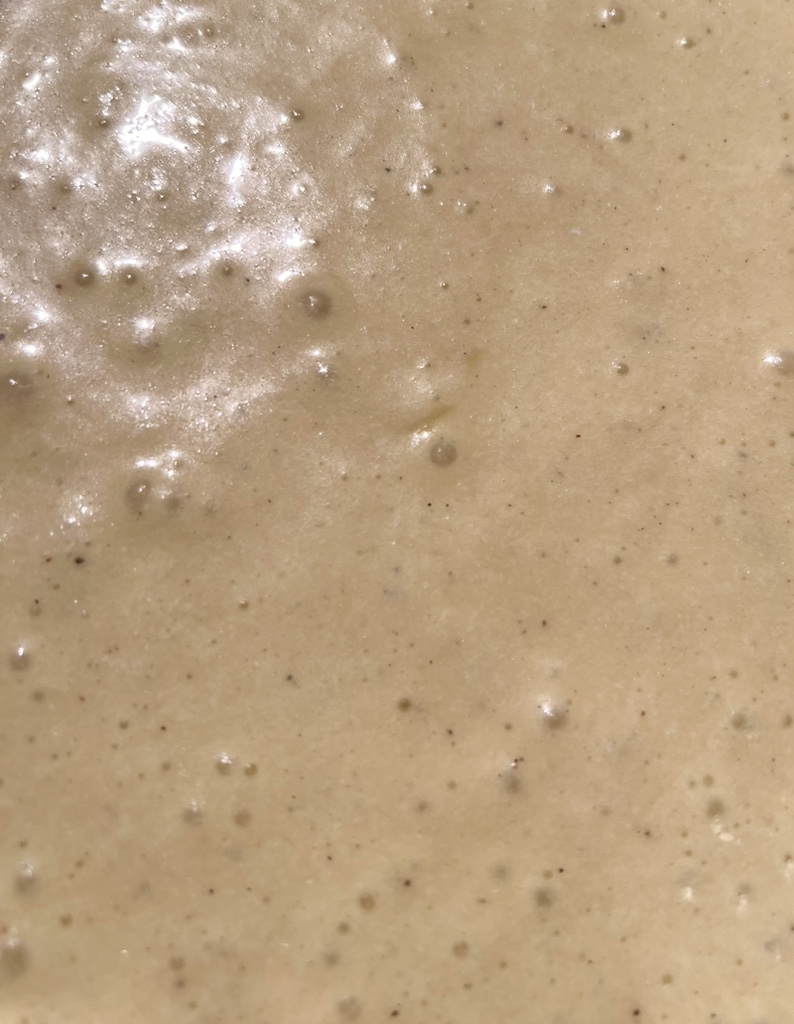
Now the oven is preheated to 180 degrees Celsius (without fan). We carefully brush the inside of ramekins (inexpensive and versatile in the kitchen) with melted butter right up to the edges. Then we sprinkle flour on the base and inside walls while turning the moulds. The excess flour is carefully tapped out of them. They must be covered all over with butter and flour, otherwise the soufflé will stick later.
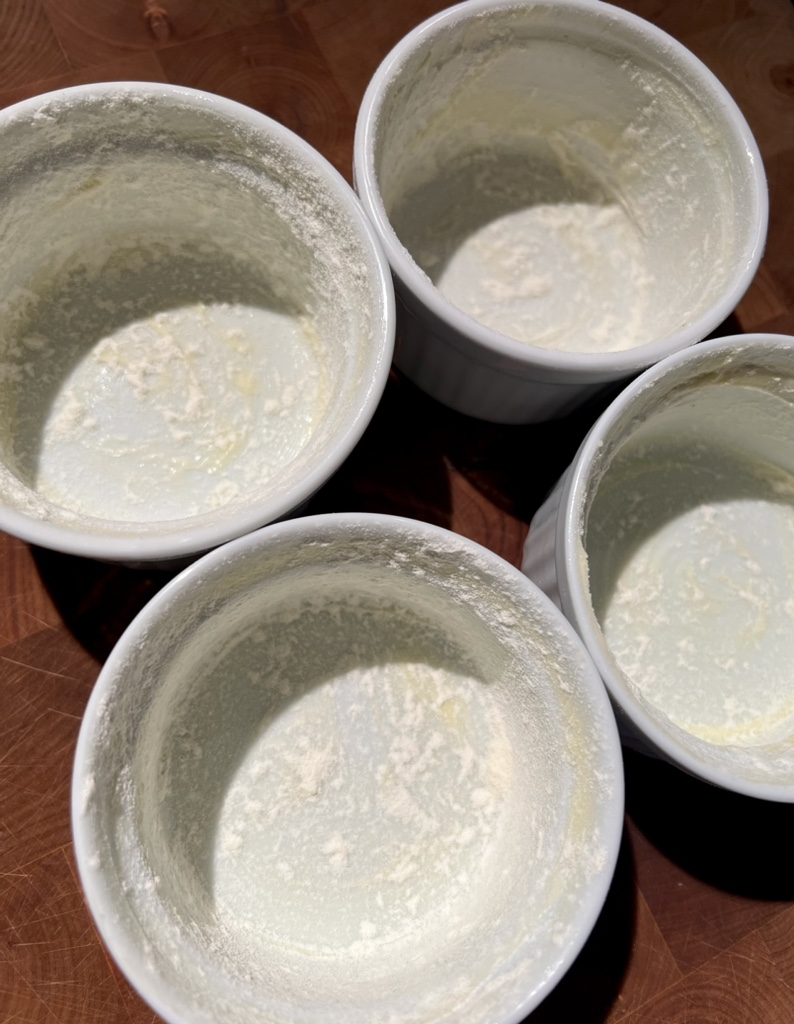
Then we pour our cream into the moulds, clean the edges and place them about 1.5 cm high in a water bath. If you don’t have a suitable oven dish, you can also use a deep baking tray.
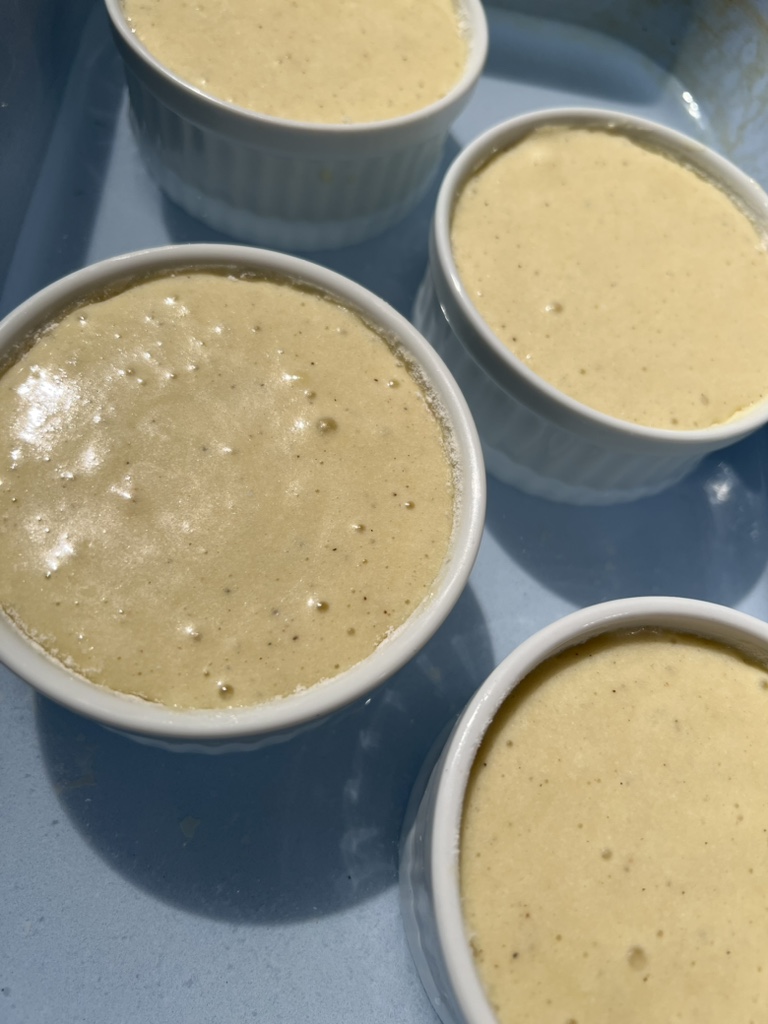
The soufflés are baked for 20 – 25 minutes. The custard should rise to the top and be lightly browned. As always with soufflés, the oven must not be opened during this time, otherwise the mixture will collapse.
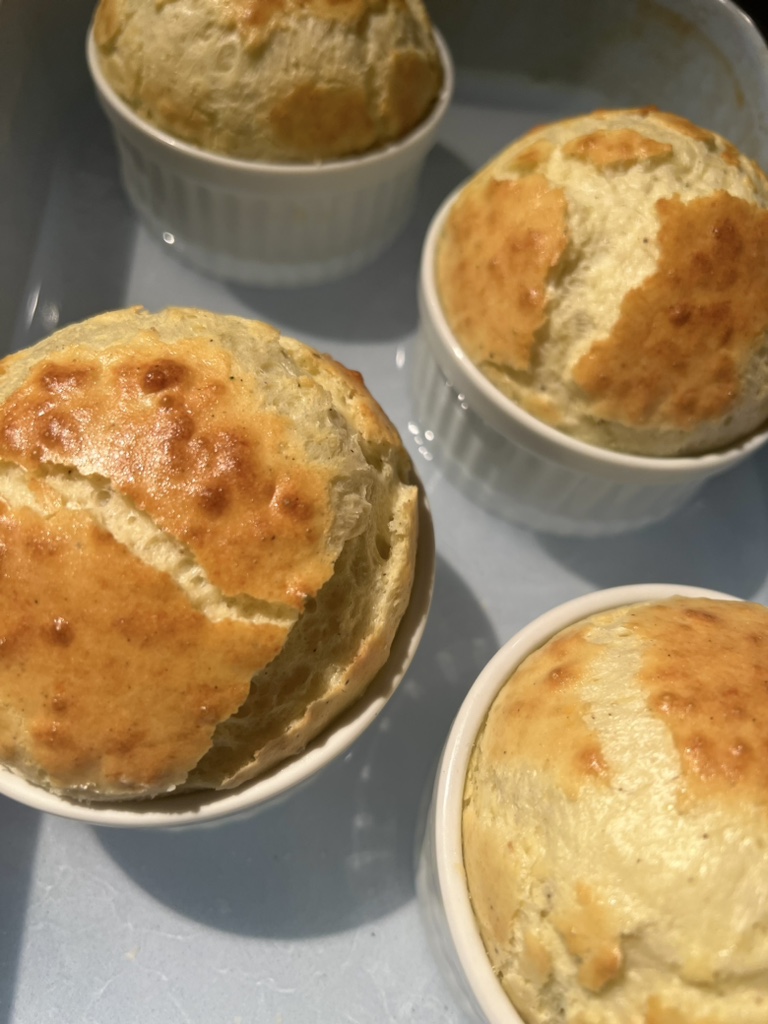
The baked soufflés could now be eaten immediately. However, we leave them to cool and they will lose some of their height. Baked in this way, they can also be kept in the fridge until the next day.
While the soufflés are baking, we bring the cream to a gentle simmer to reduce it. We flavour with a whole clove of garlic and a strip of lemon zest, both of which are removed after about 15 minutes.
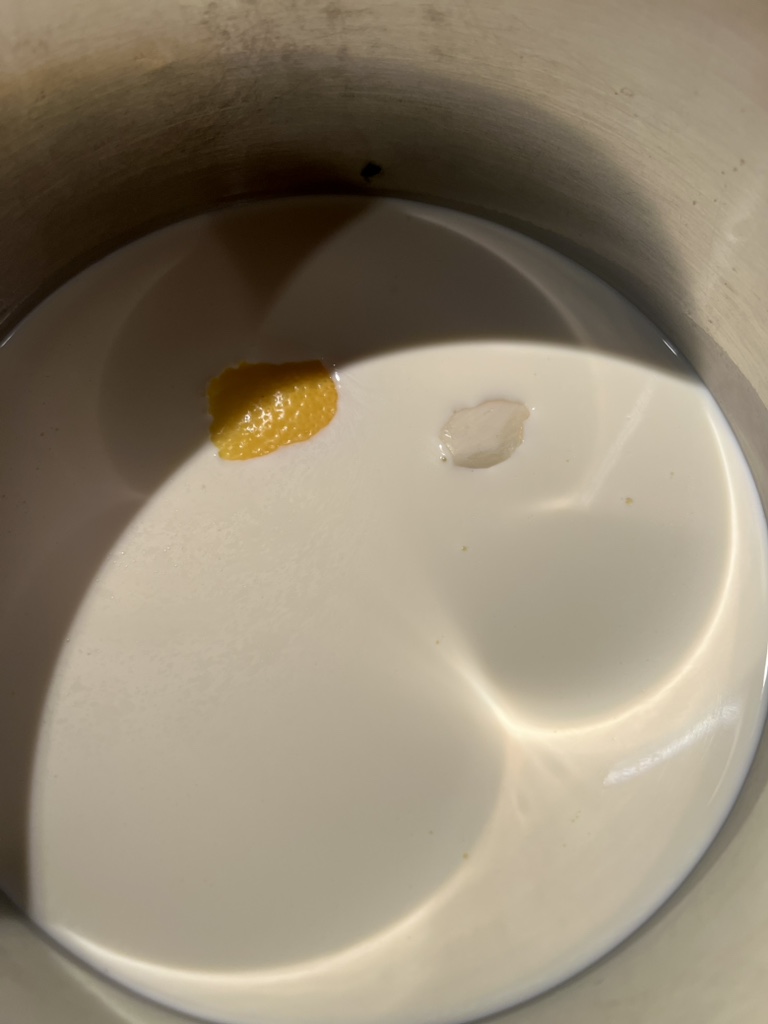
Now we stir our remaining blue cheese into the cream and season with salt.
We run a knife around our cooled soufflés and turn them out of the ramekins.
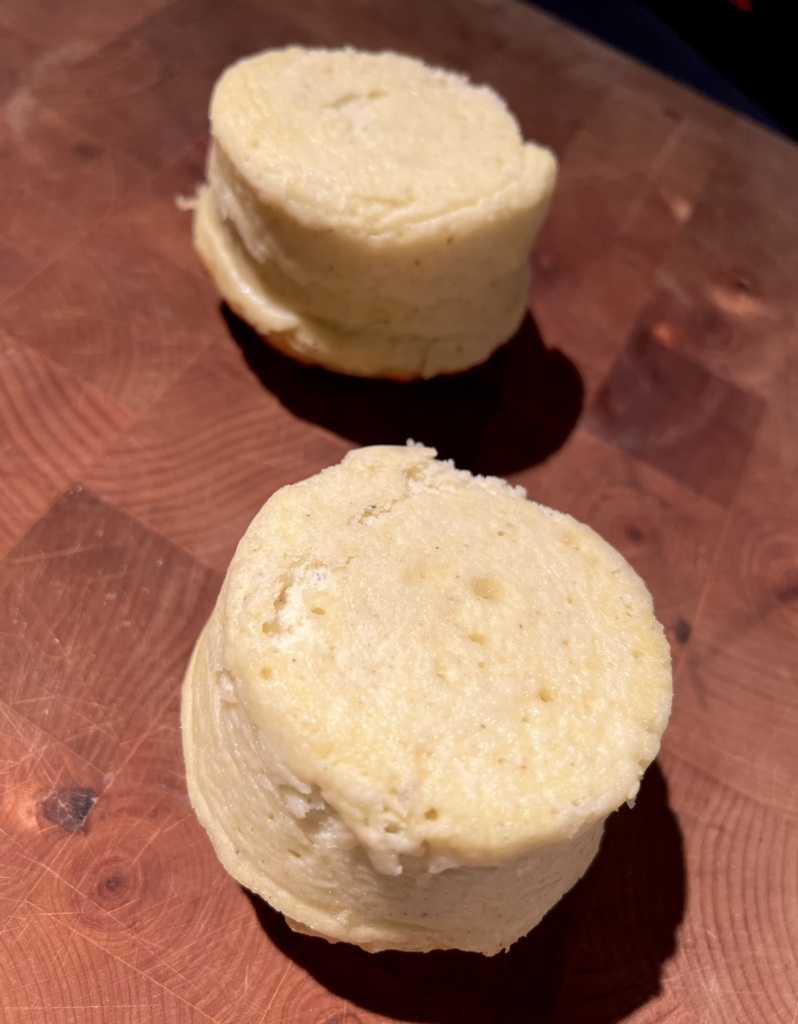
We place the soufflés, now the right way round again, in a casserole dish, pour the cream and cheese sauce over them and finally grate some Parmigiano Reggiano over the top.
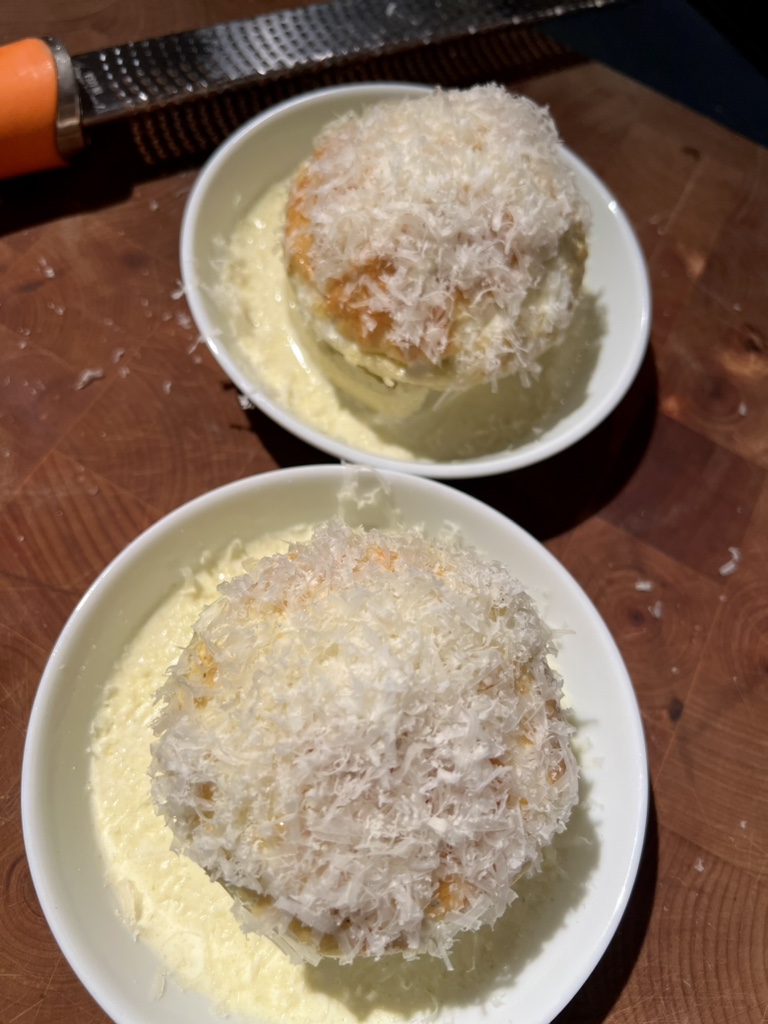
Then they are baked a second time, again at 180 degrees Celsius without fan and for another 20 minutes or until golden brown.
Best served with a fresh salad and finely chopped chives.
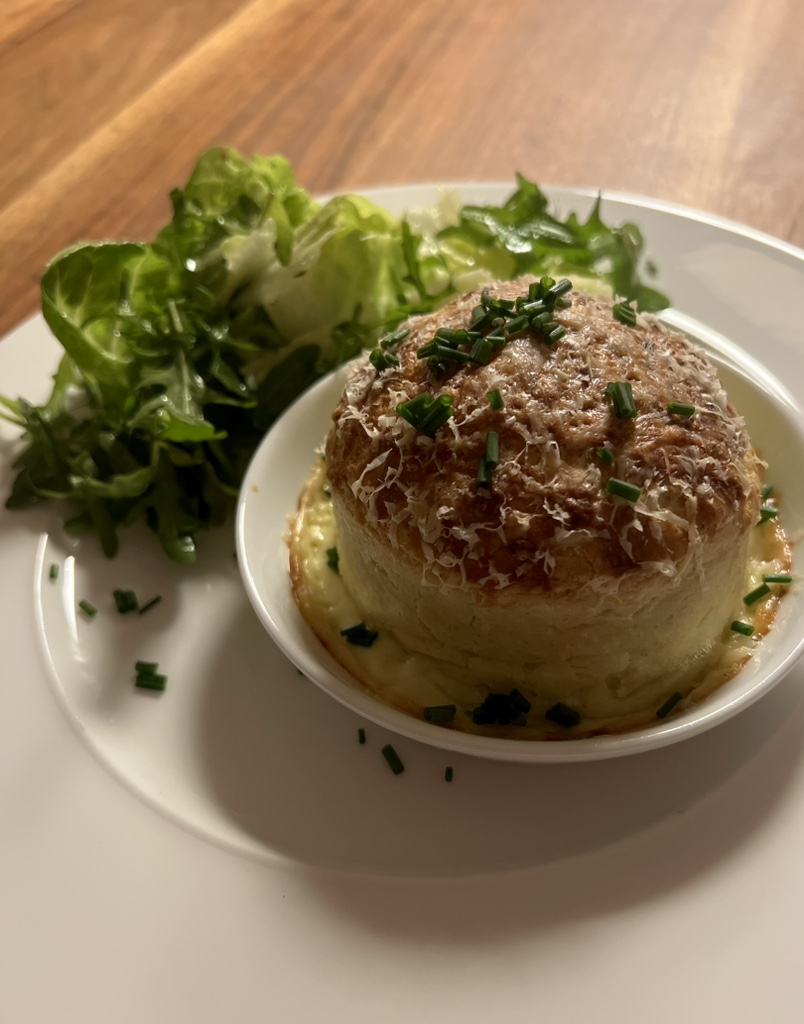
Enjoy.
And may the taste be with you.
Ingredients (for 4 soufflés):
For the soufflés:
50 g butter
50 g flour (gluten-free: 25 g rice flour and 25 g potato starch)
250 ml milk
50 – 75 g blue cheese, according to intensity and flavour
Salt, pepper and nutmeg
5 eggs, egg yolks and egg whites separately
For the ramekins:
2 tbsp melted butter
Some flour (alternatively breadcrumbs)
For the second baking:
280 ml cream
1 clove of garlic
1 strip of lemon zest
50 – 75 g blue cheese, according to intensity and flavour
Some Parmigiano Reggiano
Salt
Chives
